Authors: Norbert Bacyk
Warszawa II (32 page)
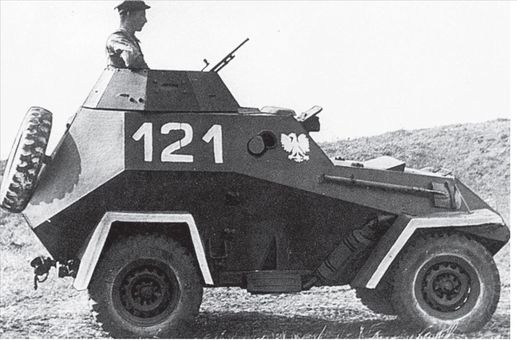
A more modern armoured-car which was not over-armed like the BA-10, but only had a two man crew and a machine-gun: It was a notably excellent scouting car. A total of 3,600 examples were built during WWII.
Production period:
1942 â 1945
Manufacturer:
GAZ
Tonnage:
2.5 tonnes
Crew:
2
Length:
3.67 meters
Width:
1.52 meters
Height:
1.88 meters
Wheel base:
unavailable
Ground clearance:
25 cm
Motor:
GAZ-MM Diesel
Engine capacity:
54 HP at 2,800 rpm
Fuel capacity:
100 liters
Maximum speed:
80 km/h
Maximum range:
560 km
Armament:
1 Ã 7.62 mm MG DT
Ammunition quantity:
7.62 mm â 1,300 rounds
Armour strength:
Hull frontal:
12 mm
Hull sides:
12 mm
Hull rear, roof, floor:
12 mm
Turret front:
12 mm
Turret sides:
12 mm
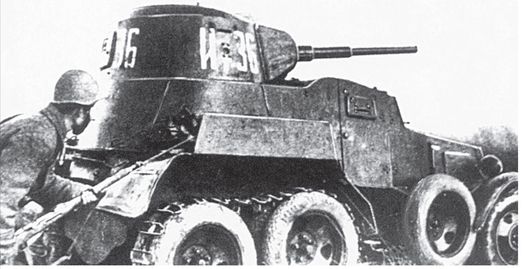
The Soviets' most common heavy armoured car during WWII. It bore a 45 mm gun in the turret as well as a machinegun. Strong and swift but unfortunately built only with 6Ã4 steering capacity which made it difficult for cross country operations. 1,400 were manufactured during the war years.
Production period:
1938 â 1942
Manufacturer:
GAZ
Tonnage:
5 tonnes
Crew:
4
Length:
4.66 meters
Width:
2.07 meters
Height:
2.21 meters
Track width:
unavailable
Ground clearance:
22 cm
Motor:
GAZ-M1 Diesel
Engine capacity:
52 HP at 2,800 rpm
Fuel capacity:
120 liters
Maximum speed:
53 km/h
Maximum range:
250 km
Armament:
1Ã4.5 cm M1938,
2Ã 7.62 mm MG DT
Ammunition quantity:
4.5 cm â 43 shells
7.62 mm â 2,100 rounds
Armour strength:
Hull frontal:
10 mm
Hull sides:
10 mm
Hull rear, roof, floor:
10 mm
Turret front:
10 mm
Turret sides:
10 mm
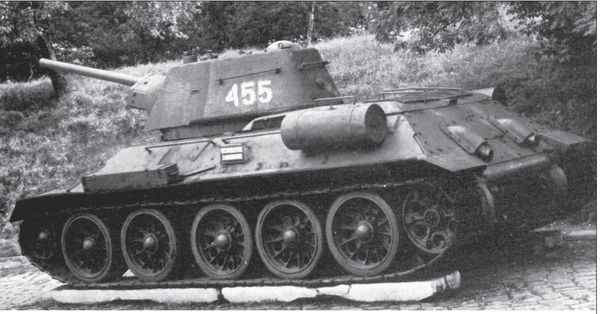
The world's most famous and most manufactured tank. And apparently a number are still in use today in most of the trouble spots and conflicts around the world. The ground reason for its success was, and remains, the suspension utilized to mount the caterpillar tracks; the so called “Christie suspension” which, together with its powerful engine and broad caterpillar “feet,” turned all terrain, with the exception of deep heavy mud, into common roads. It was produced in two main versions, the /76 and /85. The /85, however, eventually became the standard version in 1944. The designation “85” refers to the gun calibre. At the start of the war, the standard tank designed and produced by the Soviets had a turret with space for a crew that fell one man short â that is to say, the German tanks of comparable size had three-man turrets and the T-34/76 turrets could only accommodate two men: The T-34/85 had a three-man turret. In addition, T-34s were rarely equipped with radios in the period prior to 1943, which naturally hindered coordination and effectiveness on the battlefield. This aside, it was well armed and well protected; the T-34's armour has also been a model for international tank design ever since 1941, and it was mechanically dependable despite the fact that overall Soviet engineering prowess generally left something to be desired. It was neither finely crafted nor finely painted but it was dependable â and popular with all who used it, including the Germans. Soviet industry managed to build approximately 35,000 T-34/76s and 31,000 T-34 /85s during WWII.
T-34/76
Production period:
1940 â 1944
Manufacturer:
Kirov, STZ
Tonnage:
26.5 tonnes
Crew:
4
Length:
6.68 meters
Width:
3 meters
Height:
2.45 meters
Track width:
40 cm
Ground clearance:
40 cm
Motor:
V2 Diesel
Engine capacity:
500 HP at 2,000 rpm
Fuel capacity:
460 liters
Maximum speed:
54 km/h
Maximum range:
300 km
Armament:
1Ã7.6 cm F-34 L/41.5
2Ã7.62 mm DT MG
Ammunition quantity:
7.6 cm â 77 shells
7.62 mm - 2,900 rounds
Armour strength:
Hull frontal:
52 mm
Hull sides:
52 mm
Hull rear, roof, floor:
13 mm
Turret front:
52 mm
Turret sides:
52 mm
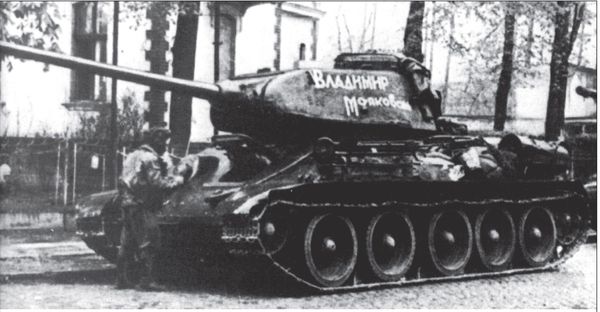
Production period:
1944 â 1945
Manufacturer:
Kirov, STZ
Tonnage:
32 tonnes
Crew:
5
Length:
8.15 meters
Width:
3 meters
Height:
2.60 meters
Track width:
40 cm
Ground clearance:
40 cm
Motor:
V2-34 Diesel
Engine capacity:
500 HP at 1,800rpm
Fuel capacity:
unavailable
Maximum speed:
52 km/h
Maximum range:
230 km
Armament:
1Ã8.5 cm ZiS S-53
2Ã7.62 mm DT MG
Ammunition quantity:
8.5 cm â 55 shells
7.92 mm â 1900 rounds
Armour strength:
Hull frontal:
90 mm
Hull sides:
75 mm
Hull rear, roof, floor:
20 mm
Turret frontal:
90 mm
Turret sides:
75 mm
The Soviet Union's most common light tank by 1944; the T-70 had the classical Soviet design for light tanks; a one-man turret and one person in the tank. In other words, it had a two-man crew, operating a 45 mm gun and a machinegun. It had strong armour for being a light tank but with a one-man turret, limited effectiveness in battle. Approximately 8,400 were built during WWII.
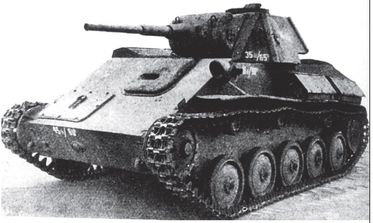
Production period:
1942 â 1943
Manufacturer:
Factory no,. 43
Tonnage:
10 tonnes
Crew:
2
Length:
4.42 meters
Width:
2.47 meters
Height:
2.03 meters
Track width:
30 cm
Ground clearance:
30 cm
Motor:
GAZ-202
Engine capacity:
140 HP at 3,400rpm
Fuel capacity:
300 litres
Maximum speed:
45 km/h
Maximum range:
360 km
Armament:
1Ã4.5 cm model 1938
1Ã7.62 mm DT MG
Ammunition Quantity:
4.5 cm â 70 shells
7.62 mm â 1,000 rounds
Armour strength:
Hull frontal:
60 mm
Hull sides:
45 mm
Hull rear, roof, floor:
45 mm
Turret front:
60 mm
Turret sides:
45 mm
Production period:
1942 â 1945
Manufacturer:
GAZ
Tonnage:
11 tonnes
Length:
5 meters
Width:
2.74 meters
Height:
2.20 meters
Track width:
30 cm
Ground clearance:
30 cm
Motor:
GAZ-203/2,800 V-6 diesel
Engine capacity:
140 HP at 3,400 rpm
Fuel capacity:
44 km/h
Maximum range:
360 km
Armament:
1Ã 7.62 cm ZiS-3
Ammunition quantity:
7.62 cm â 60 shells
Armour strength:
Hull frontal:
35 mm
Hull sides:
10 mm
Hull rear, roof, floor:
10 mm
Turret front:
35 mm
Turret sides:
10 mm

The Soviet's most common self-propelled artillery gun during the war, it was mounted on the chassis of the light T-70. An extra wheel was added on each side and an open turret was added for the crew. This resulted in space being created for a variation of the gun mounted on the T-34's 7.62cm gun, namely, the ZiS-3. The ZiS 3 was a good combination of the 7.62cm field gun and the famous anti-tank gun of the same calibre, the ZiS-S-53. Overall, an extremely successful vehicle despite its weak armour, which was not a drawback of particular concern to the leadership of the Red Army. In total, 12,000 Su-76s were built during WWII.
